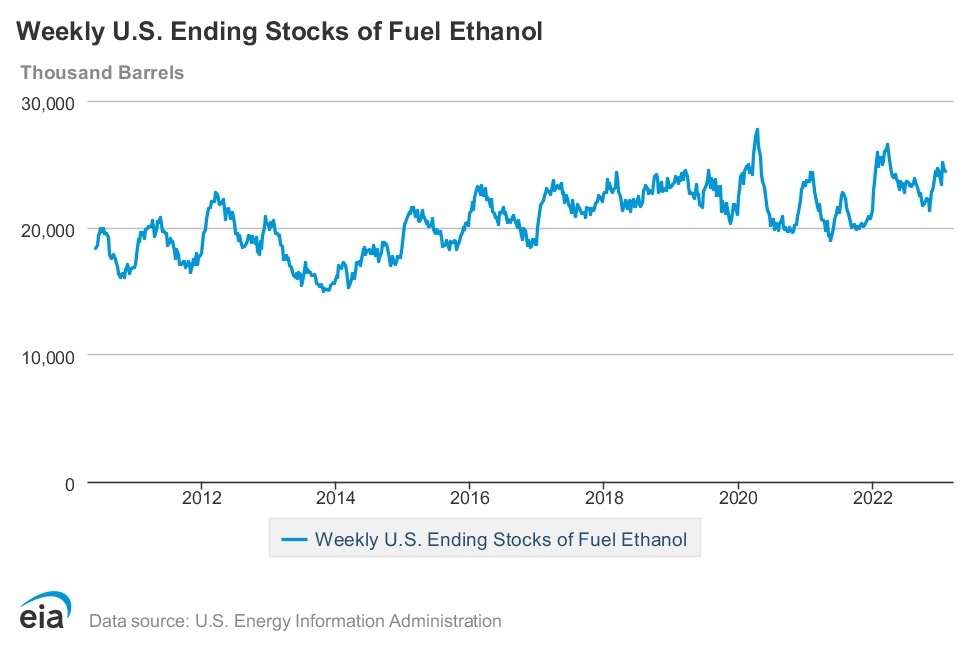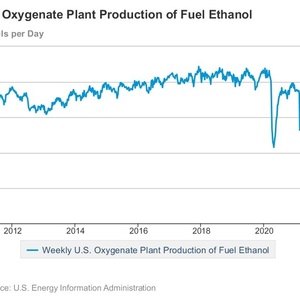EIA: Ethanol production down 3%, stocks down slightly



February 8, 2023
BY Erin Krueger
U.S. fuel ethanol production was down 3 percent the week ending Feb. 3, according to data released by the U.S. Energy Information Administration on Feb. 8. Stocks of fuel ethanol were down slightly for the week.
Fuel ethanol production averaged 1 million barrels per day the week ending Feb. 3, down 28,000 barrels per day when compared to the 1.028 million barrels per day of production reported for the previous week. When compared to the same week of last year, production for the week ending Feb. 3 was up 6,000 barrels per day.
Weekly ending stocks of fuel ethanol fell to 24.417 million barrels, down 25,000 barrels when compared to the 24.442 million barrels of stocks reported for the previous week. When compared to the same week of last year, stocks for the week ending Feb. 3 were down 382,000 barrels.
Advertisement
Advertisement
Advertisement
Advertisement
Related Stories
The U.S. Department of Energy’s Office of Energy Efficiency and Renewable Energy is soliciting public comments on a preliminary plan for determining provisional emissions rates (PER) for the purposes of the 45Z clean fuel production credit.
On July 17, Iowa’s cost-share Renewable Fuels Infrastructure Program awarded $1.12 million in grants for 20 applicants to add B11 and 4 applicants to add E15 to retail sites. This was the first meeting following the start of RFIP’s fiscal year.
Par Pacific Holdings Inc., Mitsubishi Corp. and ENEOS Corp. on July 21 announced the signing of definitive agreements to establish Hawaii Renewables LLC, a joint venture to produce renewable fuels at Par Pacific’s refinery in Kapolei Hawaii.
A new study published by the ABFA finds that the U.S. EPA’s proposal to cut the RIN by 50% for fuels made from foreign feedstocks, as part of its 2026 and 2027 RVOs, could stall the growth of the biomass-based diesel (BBD) industry.
The European Commission on July 18 announced its investigation into biodiesel imports from China is now complete and did not confirm the existence of fraud. The commission will take action, however, to address some systemic weaknesses it identified.
Upcoming Events










